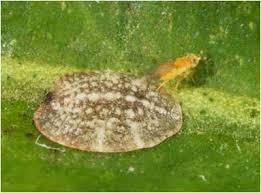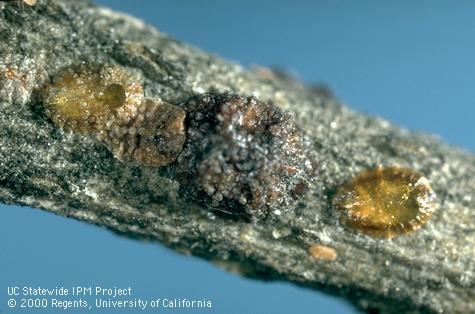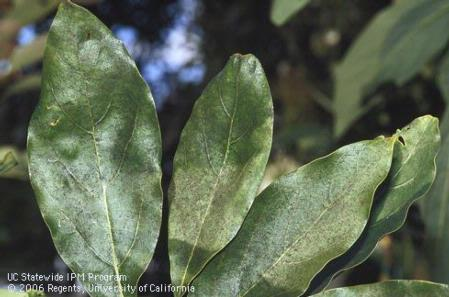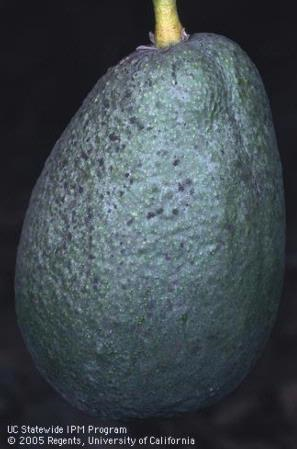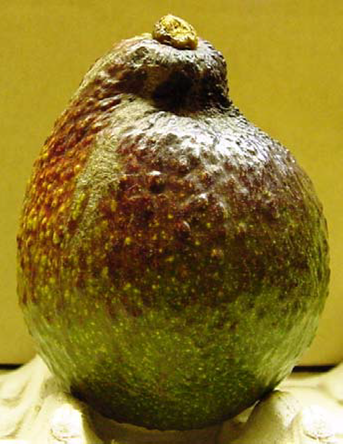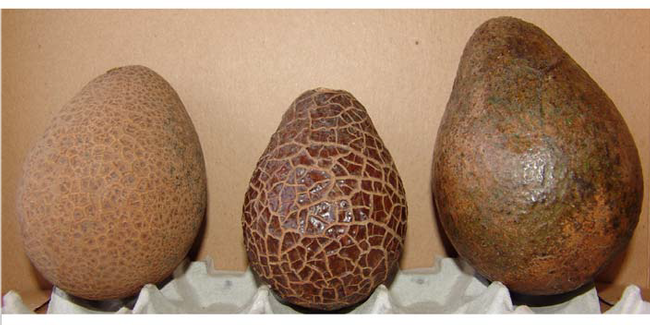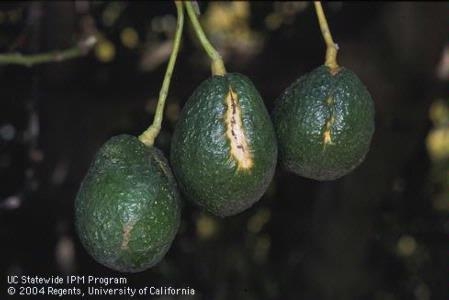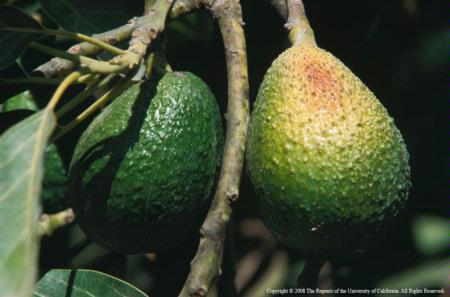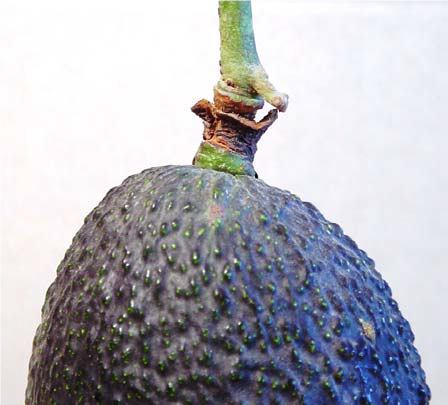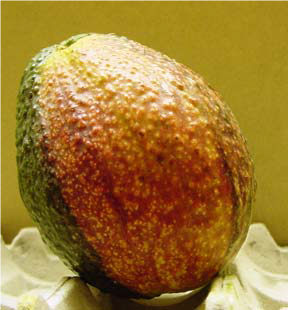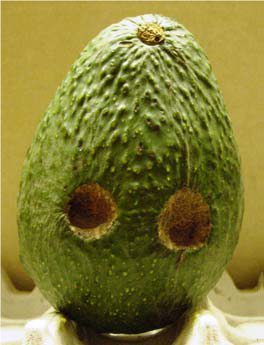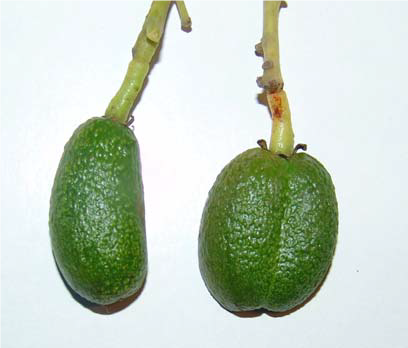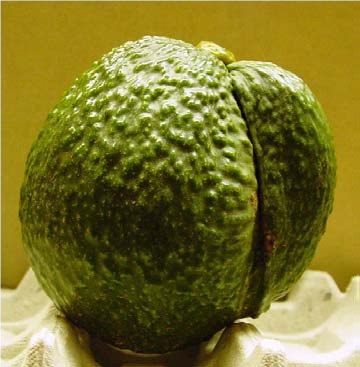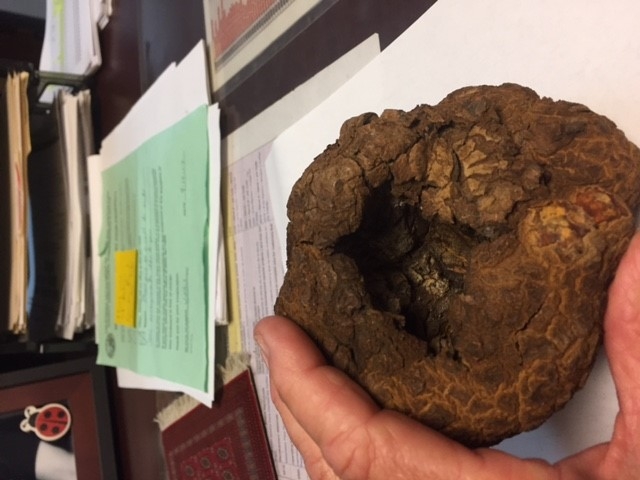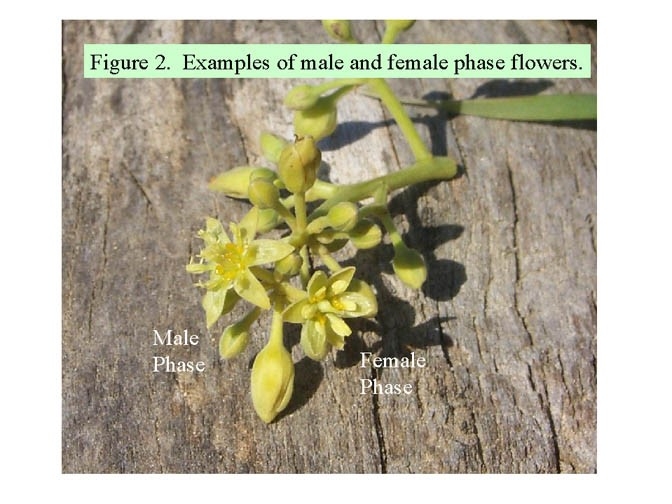
Posts Tagged: persea
Black Scale on my Avocado?
We live in unusual times and every year is different, so we are bound to see things that are different, or see things differently. Recently a pest control advisor brought in a sample of what looked like black scale (Saissetia oleae) on the stems of avocado fruit. Along with the scale came a mess of Argentine ant and sooty mold. The PCA had not seen this scale on avocado before. It is common on citrus and, from the name, it is also found on olives and over 100 other host-plants. I hadn't seen it on avocado before, and became somewhat alarmed and sent samples off to UC Riverside for identification. I thought maybe there might have been an introduction of a new scale, riding on imported fruit. Joe Morse and crew from UCR had done a study monitoring fruit coming across the border and found several scales on fruit that were not currently in California:
http://entnemdept.ufl.edu/Hodges/als4161/Secure/PDF%20Files/Articles/AvocadoPhytosanitaryRisks.pdf
Back with the first infestations of Avocado thrips in 1996, PCA Charlie Gribble kept saying that he was finding citrus thrips in avocado. The avocado orchards where he found the thrips were next to a lemon orchard and we kept saying that the insect was probably just getting lost between the two orchards. Well it turned out, it wasn't citrus thrips, but an all new thrips previously undescribed that has gone on to cause a lot of disruption to the California avocado industry. And from here, avocado thrips has gone on to Israel and Spain to cause similar problems. It was better to find out sooner than later it this scale was something new.
I also put the word out to local PCAs and growers asking if they had seen “black scale” this year. The responses were interesting. One grower said that he had seen it occasionally on avocado trees for the last 30 years. They were on older trees and wood. They would be in small numbers in orchards some years and not others. Two PCAs said that they saw it occasionally on young trees, but they were usually parasitized, with wasp exit holes. One PCA said that the scale was only there when there were lots of ants present to fend off parasitic wasps.
Photos: parasitic wasp laying eggs and exit hole of young wasp from adult scale
And bingo, that was the case in this organic orchard with smaller trees. The Argentine ants were protecting the scale and the scale was thriving as evidenced by the sooty mold.
The black scale samples sent into Paul Rugman-Jones at UCR Entomology were identified as the scale Saissetia olea and that virtually all of them were parasitized by the Coccophagus rusti wasp. So it's not a new scale and it's under biological control.
Photos: Sooty mold on avocado leaves and fruit
Nice coverage of scales:
https://www.dialenvironmental.com/images/scales.pdf
http://ipm.ucanr.edu/PMG/r107301411.html
For a guide to the scales of California, big files and illustrations:
https://www.cdfa.ca.gov/plant/PPD/publications/tech_series.html
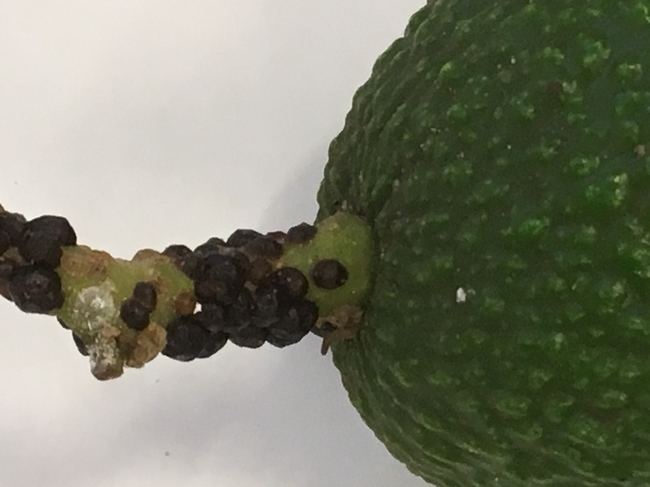
black scale avocado
Hass or Haas Avocado?
There was just a group of Florida researchers here in California sharing their experiences with ambrosia beetles and a fungal disease in avocado and other members of the laurel family. This is a pest/disease complex similar to that found here caused by a shot hole borer and fusarium. Avocados grown in Florida are of the West Indian or West Indian cross with Mexican or Guatemalan varieties. They are usually big, green fruit that tend to be of a lower oil content. Some marketers promote them as “low cal” or “slimcados” as a result. Whatever.
One of the things that struck home during these wonderful talks was the pronunciation of the word Hass. It was “hozzz”. The “a” was pronounced like the a in hot, not in hat. It made me think that this is probably how our familiar fruit is probably pronounced in much of the US. I also hear Californians (and CA growers, too) pronounce this iconic fruit “hozzz”. The generally accepted pronunciation of this name is “HaaaaSSSSS”. Like in the verb “has” - “He has an avocado”.
The fruit variety was found by a California grower named Rudolph Hass in the 1920's. The name Hass is of German origin. How it has come to be pronounced differently from his name is not clear to me. According to Google Translate, even in German it is pronounced as “has”, though with a somewhat clipped “s” on the end.
And not only has the pronunciation of the name been changed, sometimes the spelling in many produce departments is “Haas”. I once saw it on packaging spelled this way and when I asked the produce manager how that had happened, he told me that they had asked the packer explicitly to spell it that way because that's the way the consumers wanted to see it spelled.
So, the consumer drives the market. Maybe how people say it isn't important, as long as they know what they are buying and enjoy the fruit. At least most Californians seem to know how to say the word Hass.
Can you say Hass?
Photo: On the left: Florida (Slimcado) avocado. On the right: Haas avocado or Lamb-Haas. From: The Gardening Cook, http://thegardeningcook.com/slimcado-information/

Hass vs Haas
Crazy Avocado Fruit
Avocado harvest time and the growers are in the orchard checking things out a little more closely and to see what is going into the bins…..and they see some unusual shaped fruit. Here's what's been popping up and some possible explanations.
Crick-side - First described by Dr. J. Eliot Coit as kink-neck and later by Horne (1931) as kink-side. Finally, the name crick-side (Horne, 1934) was adopted. It is characterized by a definite depression on one side between the stem end and the larger portion of the fruit causing a distortion. In some cases, the area of depression turns black and the fruit drops. In other cases, the fruit grows and matures but the distortion remains. Crick-side is usually found on trees carrying a heavy load of fruit. It has been suggested that high temperatures or temporary water-stress may relate to the occurrence of crick-side, but no definite determination as to its cause has been made.
Carapace Spot - First described by Horne (1929), the name carapace-spot was chosen because of the resemblance to a turtles' back. This external blemish is corky and usually cracked into somewhat regular, angular divisions. The flesh under the carapace spot is undamaged, but exterior appearance is such that the fruit is reduced in grade. Slight rubbing or brushing of tender young fruit on leaves or stems appears to cause this corky growth to start. Fruit on trees exposed to strong winds are more apt to develop the trouble. Windbreaks should reduce injury in windy areas.
Photo: Avocado thrips damage, carapace damage and greenhouse thrips damage.
Sunblotch - This is a viroid that can affect fruit, leaves, and stems with a yellow or reddish streaking, cause a compacted growth and willowy growth habit. The streaking in the fruit is usually depressed and doesn't extend the length of the body.
Sunburn - Fruit exposed to full sun may be injured by sunburn. This occurs when trees defoliate, or partially defoliate, from any of several causes, leaving the fruit exposed. It is normally most severe on fruit on the south and southwest portion of the tree. Sunburn shows as a pale yellowish area on the exposed side of the fruit. Often the center of this area turns brown to black and may wither.
Ring Neck - This trouble has been observed occasionally, particularly with Hass. The cause is unknown but is believed to be related to soil-plant water deficiency at a critical time. A ring of tissue on the pedicel just above the attachment to the fruit dies, turns black and peels off. If only superficial, the fruit remains on the tree. Growth may be retarded because the restriction impedes movement of nutrients and water outward to the fruit. Most severe in humid coastal areas.
Embossment - Occasionally, and particularly on Fuertes, a section of the surface will be raised slightly or be a darker or lighter color. This is referred to as a sectional chimera or genetic mutation.
Healed over damage - if fruit has mild damage that allows it to heal over (remember avocado fruit expand by cell multiplication not enlargement), then a scar is left, such as this likely amorbia feeding
Cuke - As in cucumber but not a squash. These are seedless fruit that can most often be seen from a fruit set in cooler weather or due to some hormonal stimulus. We don't know the reason, but seems to occur more commonly along the coast.
Double Fruit - In some instances there may be a normal shaped fruit with a single cuke attached ot in some cases there is a double ovary and two fruit are attached.
Woody Avocados - For some unknown reason, avocado fruit will form into a grotesque woody structure hardly resembling an avocado. The cause is genetic and non-transmissible.
Sources: R.G. Platt - California Avocado Society Yearbook 1972-73 and Reuben Hofshi and M.L. Arpaia Yearbook 2002.
The Remarkable Avocado Flower - It's Here and Now Watch it.
 |
|||||||
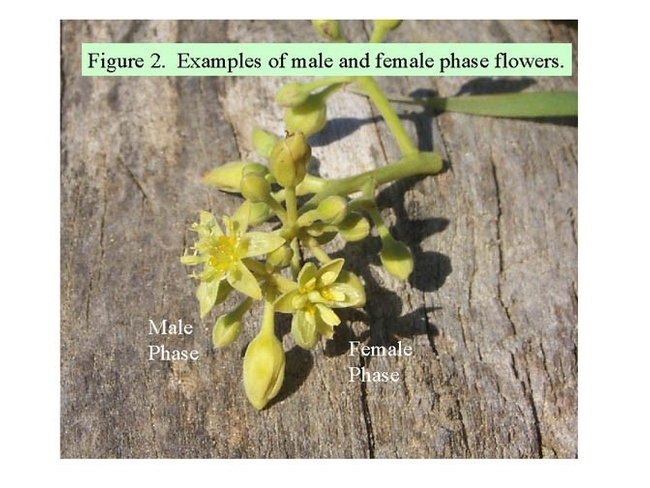
avocado flowers
Avocado Brown MIte is Coming to an Orchard Near You
All sorts of things can be blamed on this prolonged drought. And here's another one – avocado brown mite. These arachnids love water stressed trees that are covered with dust. You can see them in most orchards along picking rows, most years. The dust covers the leaves and slows and prevents the natural predators of doing their thing. Instead, the predatory mites spend lots of time cleaning their joints so that they can rush around attacking the pest mites. If you see mites running around on avocado leaves, it most likely is a predatory mite or tydeids (tidy mites), the later eat pollen, fungi and other mites. When they are cleaning, they are not eating, and brown mites get out of control.
Brown mites are leaf surface feeders and when their populations get large enough, trees can defoliate. This is especially noticeable late summer, also when persea mites start building their populations. In most years, rain washes off the leaves and along the coast, fog is also important in cleaning the leaves. This water keeps the leaves and predators clean so they can do their thing.
In years when abamectin is sprayed to control persea mite, it's also controlling brown mite. When persea is not a problem and brown mite has gotten out of hand, it may be important to spot treat the orchard with horticultural oil. This is usually along tree rows and those areas that show water stress. If the trees are showing water stress, make sure they are adequately watered before spraying or the oil itself can defoliate the trees.
Avocado Brown Mite
Avocado Brown Mite Damage
Tydeid Mite

avocado brown mite

avocado brown mite damage

tydeid mite

